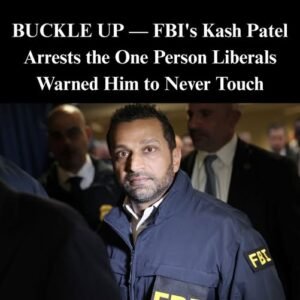Officer Daniel Reyes had been on the force for fourteen years, long enough to know that the quietest nights could turn strange without warning. It was a cool autumn evening, the kind that made the highway hum feel like a lullaby. He was halfway through his shift when he noticed something odd in the blur of headlights ahead — a black hearse, moving far too fast for a vehicle meant for solemn occasions.
The radar gun flashed red: 92 miles per hour.
Reyes frowned. A hearse speeding at midnight? That wasn’t just unusual — it was unsettling. He flipped on his lights and siren, pulling into the lane behind it. For a few seconds, the driver didn’t react. Then the hearse drifted to the shoulder and stopped.
He stepped out, hand resting on his holster more out of habit than fear. As he approached, the window rolled down to reveal a pale, sweating man in a dark suit — the kind funeral directors wear. The man’s voice trembled as he said, “Evening, officer. Sorry about the speed. I’m… on my way to a service.”
“At midnight?” Reyes asked, shining his flashlight inside. The interior was clean but smelled faintly chemical — not like embalming fluid, but something sharper, synthetic.
The driver’s eyes darted toward the back. That one movement set off alarms in Reyes’s gut. “Mind popping the rear door for me?” he asked evenly.
The driver hesitated, then forced a smile. “It’s, uh, not appropriate, officer. I’m transporting remains.”
Reyes didn’t blink. “Then this won’t take long.”
The man swallowed hard and climbed out, fumbling with his keys. The trunk creaked open, revealing a single polished mahogany coffin strapped in place. It gleamed under the flashlight beam — too new, too clean, as though it had never been near a funeral home.
“Who’s the deceased?” Reyes asked.
The driver stammered, “A relative… I mean, a client. Paperwork’s in the front.”
Reyes noticed his hands shaking. The man wasn’t just nervous — he was terrified.
Something felt wrong.
He radioed in calmly: “Dispatch, this is Unit 45. I’ve got a suspicious vehicle, black hearse, possible 10-50 situation. Requesting backup.”
“Copy that, Unit 45. Backup en route.”
As he waited, Reyes ran a gloved hand along the coffin’s edge. There were faint scratches near the seal, like someone had tried to open it — or close it — in a hurry. The driver kept glancing over, breathing fast.
“Sir,” Reyes said, “step back, please.”
The man froze. “Officer, I swear, I didn’t—”
“Step. Back.”
When the driver hesitated again, Reyes pulled the latch. The coffin lid released with a dull metallic click. For a moment, everything went silent — the hum of the highway, the wind in the trees, even the driver’s protests. Then Reyes lifted the lid.
Instead of a body, dozens of tightly wrapped packages filled the space. Plastic bricks. Compressed, sealed, uniform in size — the kind of thing Reyes had seen too many times before in narcotics raids.
Cocaine. Enough to drown a city block.
The driver’s composure cracked. He stumbled backward, muttering, “It’s not what it looks like, I swear—they made me do it!”
Reyes stepped in front of him, voice firm. “Keep your hands where I can see them.”
The man dropped to his knees, tears cutting through the sweat on his face. “They said they’d kill me if I didn’t drive it! I didn’t even know where I was going—just to the border!”
Reyes didn’t answer. His focus was on procedure: cuff, secure, search. He read the man his rights while waiting for the backup units’ sirens to cut through the night.
When the other patrol cars arrived, red and blue lights spilled across the pavement like flashes of lightning. The officers worked methodically, documenting every package. A K-9 unit confirmed the drugs almost instantly.
By dawn, the highway looked like a scene from a crime movie — floodlights, evidence markers, uniformed officers moving silently around the hearse.
Later, in the interrogation room, the driver — identified as Miguel Ortega, a mortuary assistant from El Paso — finally confessed. He’d been recruited by a cartel operative who promised him a fortune for one delivery. The plan was simple: no one questions a hearse. A coffin is the perfect cover.
It had worked — until that night.
For Reyes, the shock wasn’t just the size of the drug haul. It was the audacity of it — using a symbol of mourning, something sacred, to smuggle poison across state lines. He’d seen dealers hide drugs in tires, engines, even baby formula cans, but never inside something meant to honor the dead.
When reporters later asked him about it, he said only one thing: “Evil hides where you least expect it.”
But the story didn’t end there.
Federal agents took over the investigation. The coffin turned out to be one of several used in an elaborate trafficking network stretching from Mexico to Chicago. Each hearse carried identical cargo — enough narcotics to fuel millions in black-market profit. Ortega’s stop was the first crack in the chain. Within weeks, multiple arrests followed, including the mortuary owner who’d been laundering cartel money through fake funeral invoices.
The DEA called it Operation Silent Procession.
For Officer Reyes, the commendation he received months later felt hollow. He didn’t crave medals or headlines; he couldn’t forget the look in Ortega’s eyes — that mix of fear, guilt, and relief when it was over. The man had been in way over his head, a pawn who’d agreed to drive death disguised as death itself.
Sometimes, Reyes thought about that coffin — the one filled not with a body but with decay of another kind. It reminded him of the thin line he walked every night, between the ordinary and the unthinkable.
A few weeks after the bust, he drove past a real funeral procession on the same stretch of highway. The line of black cars moved slowly, headlights low, flags fluttering in the breeze. He pulled over, removed his cap, and stood by the side of the road until the last car passed.
He didn’t know the deceased, but that didn’t matter. For him, it was a way to reclaim the meaning of what he’d seen — to remember that not everything hidden in darkness is evil, and not every silence conceals deceit.
That night’s discovery became a quiet legend in the department — the kind of story rookies whispered during long shifts to remind themselves that vigilance isn’t just about instinct, but respect.
Because in law enforcement, as Reyes learned under flashing lights and the scent of gasoline and fear, nothing is ever what it seems — not even a coffin rolling down an empty highway in the middle of the night.

